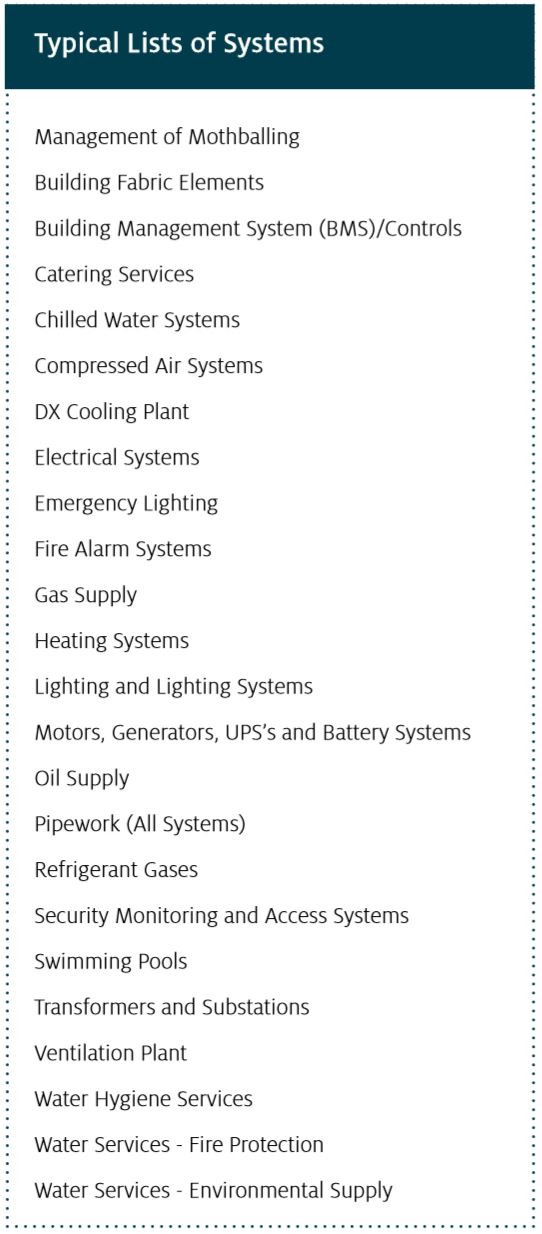With many thousands of people now working from home or prevented from travelling, many commercial buildings are moving into a paused or shutdown condition.
This will have huge implications for building services equipment. Owners, landlords and tenants still need to maintain their buildings for security purposes, to achieve statutory compliance and to protect the building fabric and critical systems as well as satisfying their insurers.
There are a number of steps to be taken to mothball a building in these circumstances. An industry guide SFG30 can be used by occupiers to guide them through a step-by-step process of maintaining critical services during this low occupancy period ready for a full reboot when business returns to normal.
There are many systems which require attention in order to meet the necessary compliance regulations and to avoid expensive failures.
Furthermore, when the time comes to re-boot a building a number of key activities will have to be undertaken, including key elements such as keeping water systems safe and healthy (in line with the Health & Safety Executive’s L8 rules for legionella control), active and passive fire protection systems, safe handling of refrigerant gases, electrical and gas safety checks and ventilation hygiene.
If a building or a system within the building is not required for a significant period full or partial isolation is possible.
The key consideration when applying a revised maintenance strategy is the duration of the closure and the cost of reduced maintenance versus the cost of mothballing and re-booting the building.
Considerations could include: –
- Life Safety, if a building is occupied by security or a skeleton workforce emergency lighting, fire alarms, emergency generators should be tested to ensure correct operations.
- Fire suppression systems still need to be checked if they are being left active whilst the building is shut down.
- Heating systems could potentially be shutdown and winterised as the weather improves and not necessarily drained down. Inserting chemicals and leaving the system fully charged will stop oxygen and contamination issues.
- Chilled water systems and cooling towers can be drained and notifications made to the local authority that the tower has been decommissioned.
- Water systems would need to be kept going or there can be unknown conditions introduced in the systems and it could be a significant cost to test and resolve issues.
- Lifts in buildings which are occupied and where they are to continue to operate will require “Thorough Examinations” to be carried out as normal. It may be the case that there are multiple lifts in a building and one or more could be removed from operation, however this will need to be checked to ensure alignment with the overall building risk and fire strategies.
- For longer durations Insurance companies will require notifying as they will want fire alarms and sprinklers maintained especially if the building is left empty for longer periods.
To help businesses our global network of industry specialists are donating their time to offer free business advice. Click here to find out more.


About the Author: Ian Morrison, has been with ERA since 2004 and brings 30+ years’ experience, gained in blue chip multinational companies, dealing with Facilities Maintenance, Manufacturing and Distribution. Ian operated at board level with full P&L responsibilities.